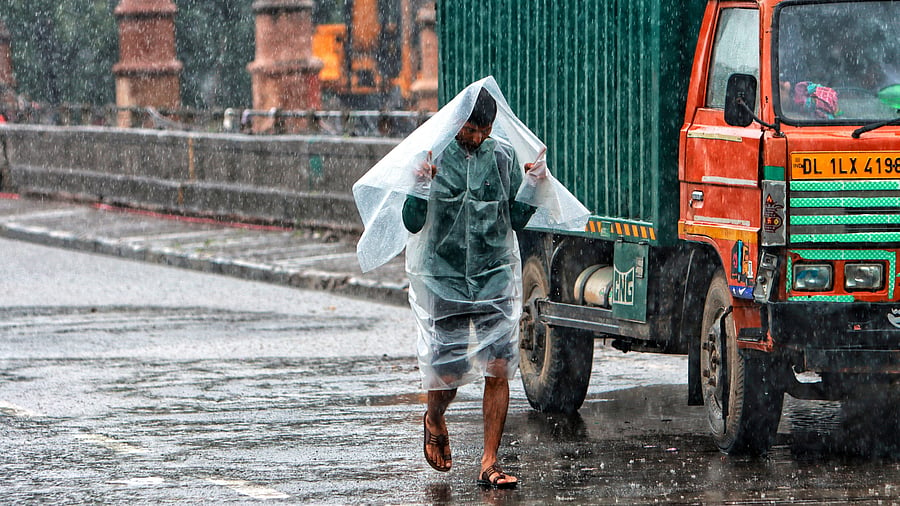
A pedestrian uses a plastic sheet to shield himself during rains. (Representative image)
Credit: PTI File Photo
Mumbai: The passage of back-to-back Western Disturbances (WD) has led to heavy rainfall across the hilly states.
The Himalayan regions in March and April experienced extreme weather events like heavy rains, thunderstorms, flash floods, and landslides ravaging Jammu and Kashmir, Himachal Pradesh and Uttarakhand.
Western Disturbances are storms that predominantly affect North India and Pakistan during winters.
These weather systems are embedded within the subtropical westerly jet that lies over the Indian region.
Western Disturbances travel across the year but in different latitudes. They travel in lower latitudes during winters bringing significant amounts of rain and snow over North India. Meanwhile, in summers, these weather systems tend to travel in higher latitudes, confining snow and rainfall activities to the higher reaches of the region.
“Heatwave has made on and off appearance over the northwestern plains as an increased frequency of Western Disturbances has been affecting the flow of dry and hot northwesterly winds. These warmer winds are replaced with easterly winds, which are comparatively cooler and thus bring temperatures down. Parts of Central and West India, too, have not seen prolonged heatwave spells in the season so far, ” said Mahesh Palawat, Vice President - Meteorology and Climate Change, Skymet Weather.
“After remaining insignificant till January, Western Disturbances picked up frequency from late January onwards and have been affecting Western Himalayas at regular intervals. The influence of Western Disturbances has been growing significantly over Jammu and Kashmir, Himachal Pradesh and Uttarakhand. They have been dumping more rainfall over the Himalayan region, which is directly related to climate change,” said Dr K J Ramesh, former Director General of Meteorology, India Meteorological Department.
“Growing evidence shows that Western Disturbances are impacting weather outside the winter season, leading to extreme precipitation events. There is no doubt that increasing heat stress is the basis of everything, as it is generating more energy and at the same time pushing moisture upwards,” Prof A P Dimri, Director, Indian Institute of Geomagnetism, said.
Western Disturbances play a critical role in winter precipitation, providing water and food security across the region. The snow they bring sustains reservoirs through spring melt, providing essential irrigation for rabi crops like barley and wheat—staples for food security in the subcontinent.
This meltwater also helps bridge the dry pre-monsoon months of May and June. Additionally, late-season Western Disturbances can affect kharif crops such as rice and maize, influencing agricultural outcomes. Over longer timescales, they are essential for maintaining glacier mass balance in a region noted for its unusual glacial stability. Consequently, Western Disturbances have both direct and indirect economic impacts in India, as they are increasingly expected to affect agricultural output and aviation planning.